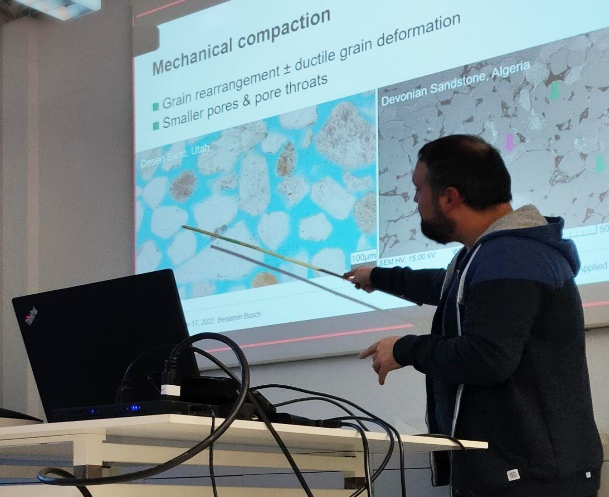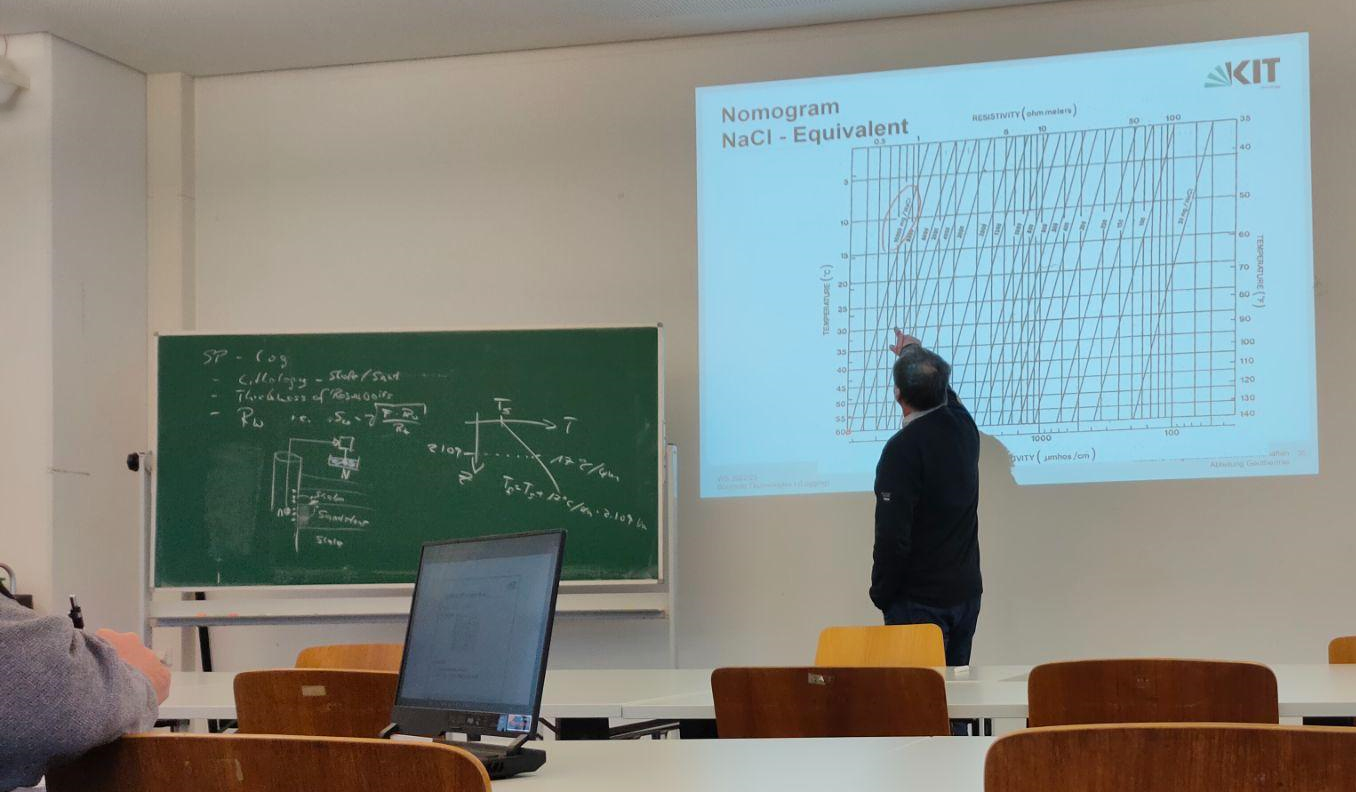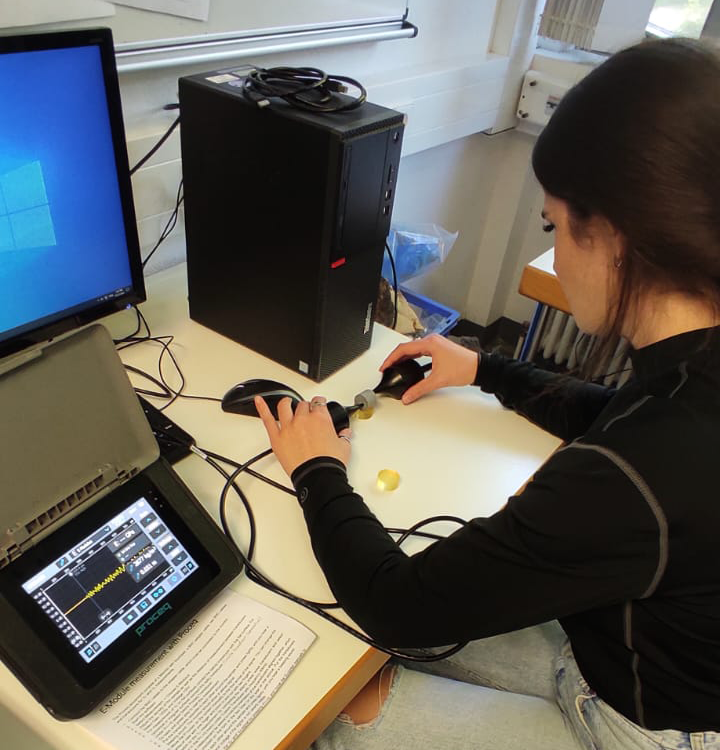SDG Student Training Report
Three weeks of discovery
Georgian technical university’s third course bachelor students: Ilia Bluashvili, Aleksandre Tepnadze, Aleksandre Kamensky. DAAD Sustainable Development Project Caucasus.
Travel
We arrived in Stuttgart on 14th November afternoon and then we took bus to Karlsruhe, where our colleagues Thomas Niederhuber and Lukas Müller were patiently waiting for us, to took us to our accommodation.
Goal of the Stay
The main purpose of our staying in Karlsruhe was research studies at KIT mainly in the institute of AGW which is the institute of applied geosciences of KIT. Therein we were in the department of Technical Petrophysics. Focus was on the orientation of drill-cores based on date of boreholes logging and drill core scans. These data are important for running the Enguri Dam which produces water power and thus clean energy which is one of the UN sustainability goals.
Our host institution in brief
The Karlsruhe Institute of Technology (KIT) is “The Research University in the Helmholtz Association.” As the only German university of excellence with a national large-scale research sector. KIT offers us unique learning, teaching, and working conditions.
General information
We lived in an apartment in the centre of the city. The apartment is perfect in every way: Own Cooking, big space etc.. We share the house with Nazi Tugushi and Tamar Shubladze. Although we have our own kitchen, we often use the university canteen. Every night we try to go for a walk and see the sights of Karlsruhe.
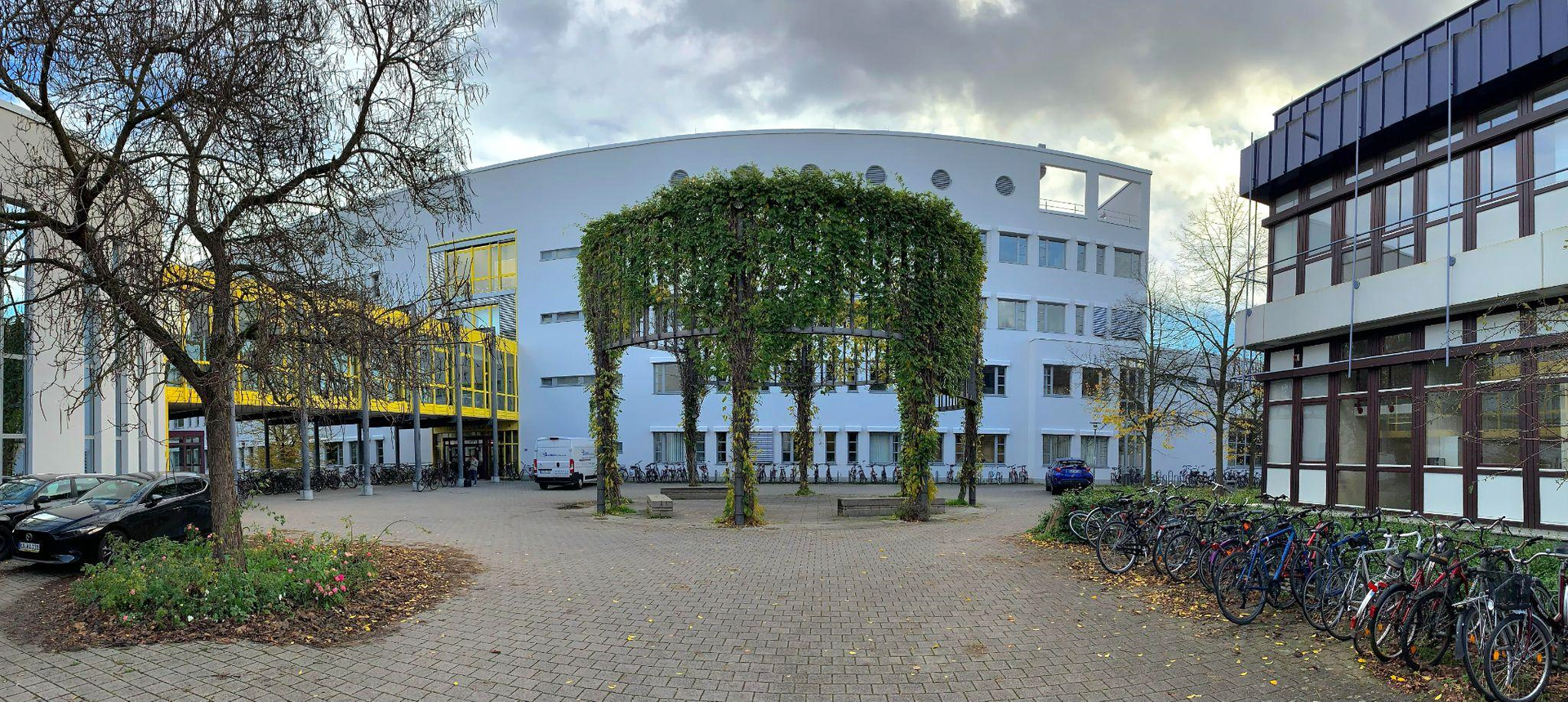
Day by Day Week 1
First day we met our main introducer, Birgit Müller and got some introduction about our course, schedule and duties. On second day we attended our first lecture about “numerical methods in geosciences”. And we get some introductory knowledge about Matlab script. Next day, there was students day (open gate day), where we attended a lot of interesting and different type of lectures, where we gained some necessary information,about dark matter evidence: galaxy cluster collisions, lecture about mechanical engineering, and also meteorology and climate physics. We were introduced to the 3D earth model, which was showing processes, which were in progress for millions of years. So, our second day was full with an overview about the KIT and the possibilities for studying at KIT.
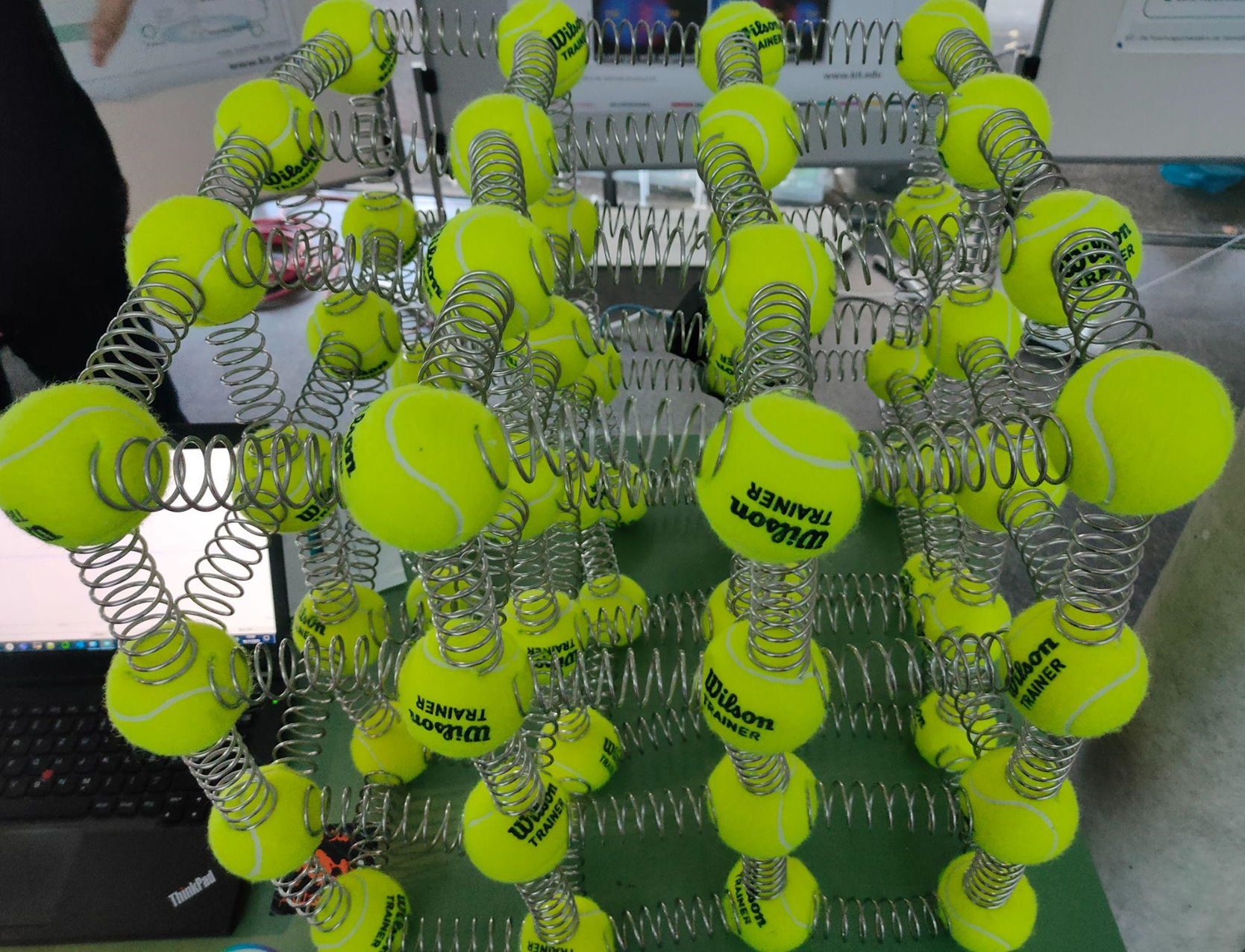 |
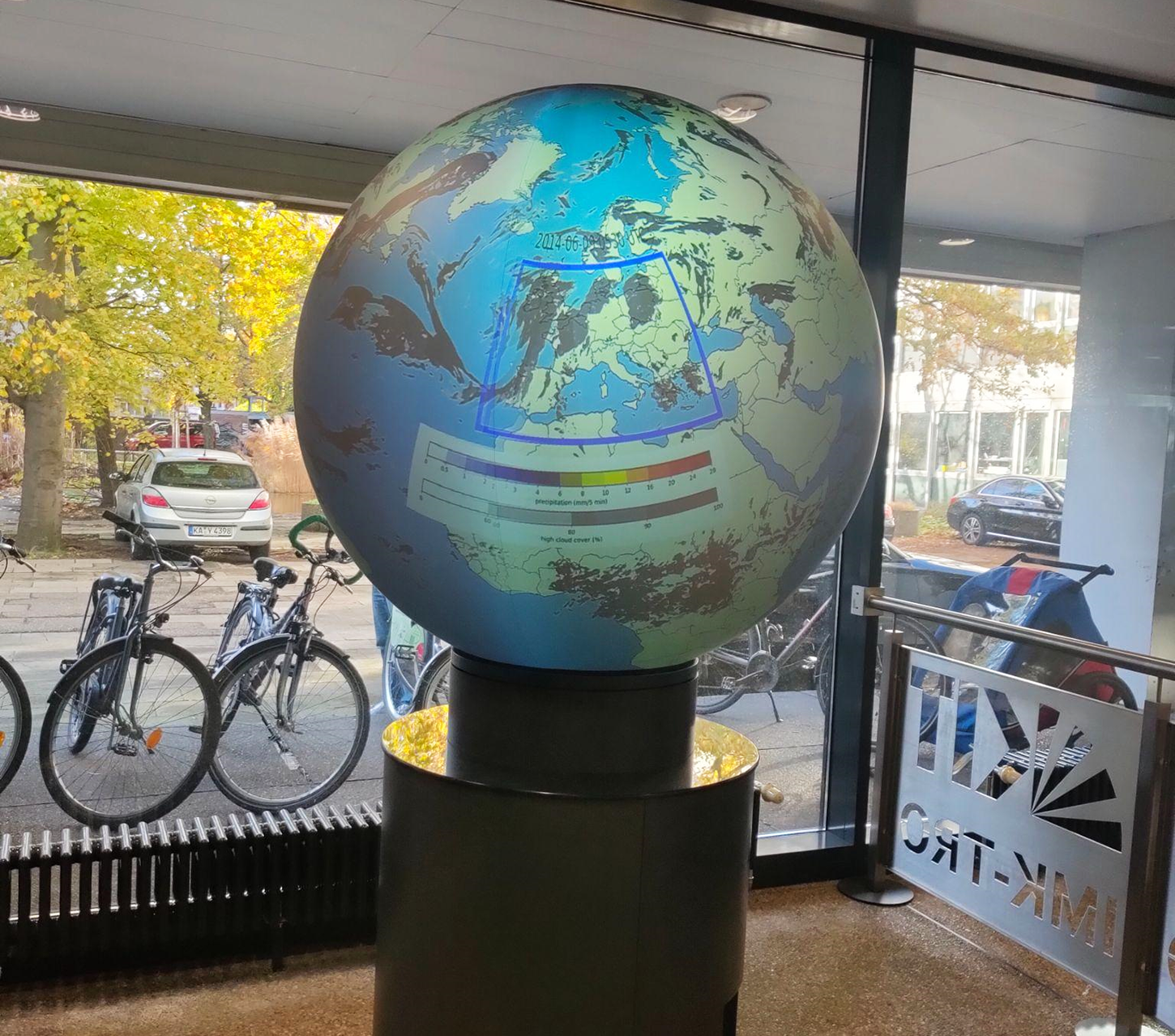 |
Our third day started with a lecture of “transport of heat and fluids”, where we gained some information about Fourier law, thermal conduction and heat transfer. There was correlation with geology: temperature change in borehole, thermal conductivity of rock samples. After that we did some scientific work, which referred to working on excel. And the final event of day was presentation about sedimentary rocks. On Friday, we had an online meeting with Birgit Müller and Lukas Müller, where we talked about our future plans. Also that day our dear colleague Mr. Thomas Roeckel arrived in the city and we met him. We used our free time to go on with our scientific work in the excel program. Also Sam Rasalingam, the technician of the department of Technical Petrophysics introduced us to the laboratory of technical petrophysics. He showed us all the equipment which they use in everyday life.
After our lectures we visited to the Staatliches Museum für Naturkunde Karlsruhe where we saw a lot of interesting things, which made quite an impression on us.
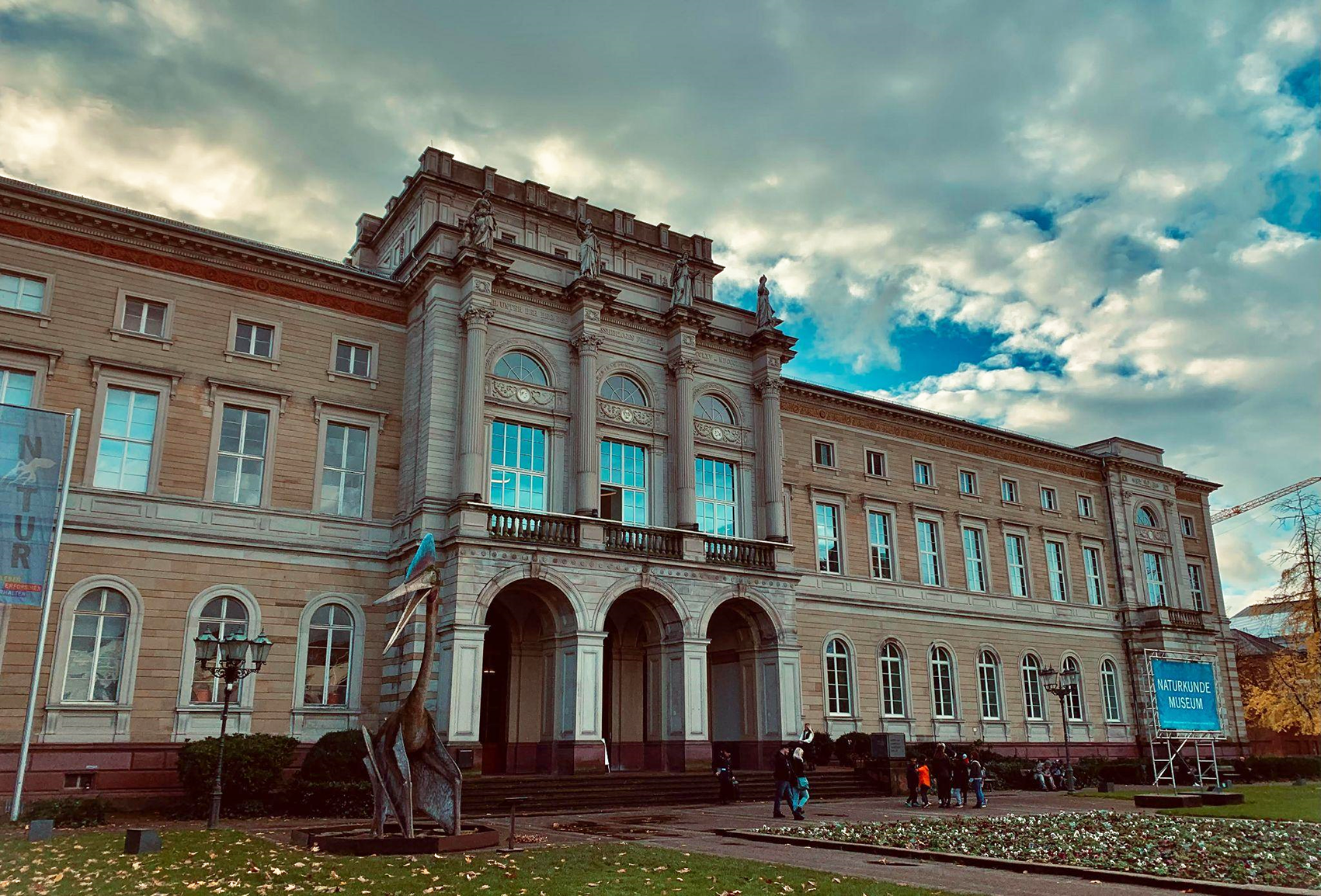 |
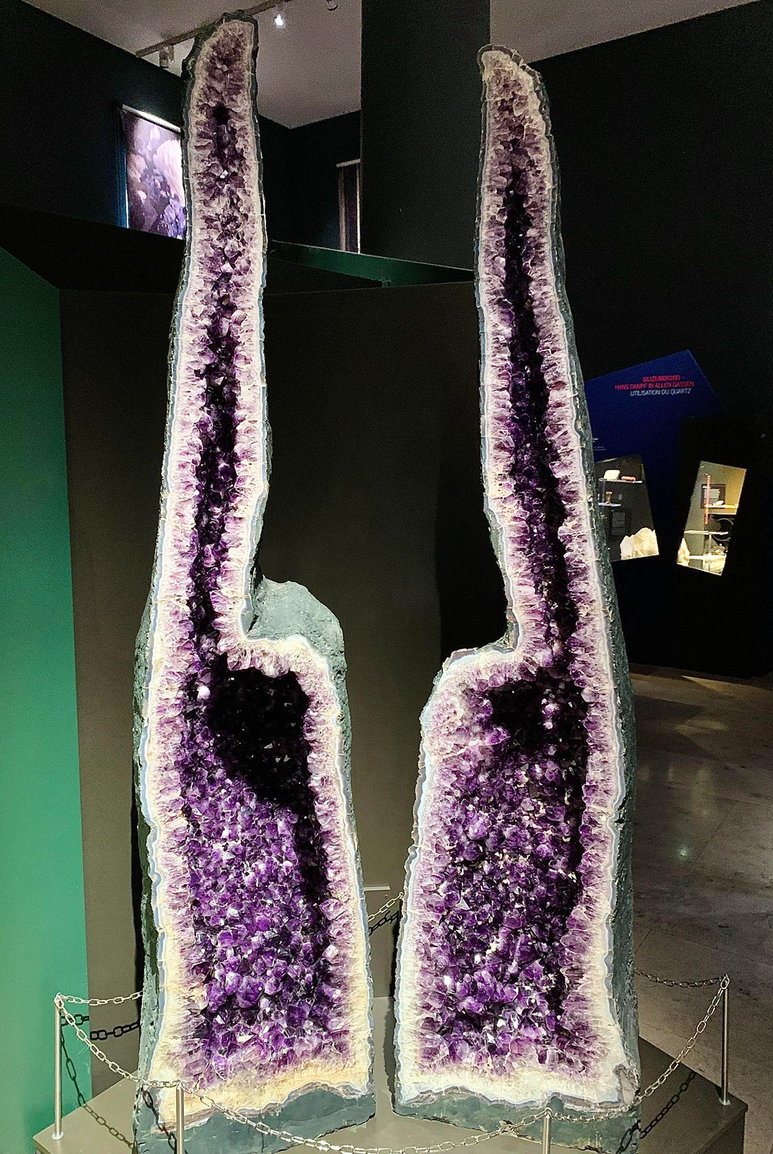 |
Week-End 1
The spare time, which we had on our weekend used for travelling. We visited Strasbourg, France, where we saw a lot of different and eye catching places, but the most interesting was “Strasbourg cathedral”. It was an unforgettable weekend of our stay here.
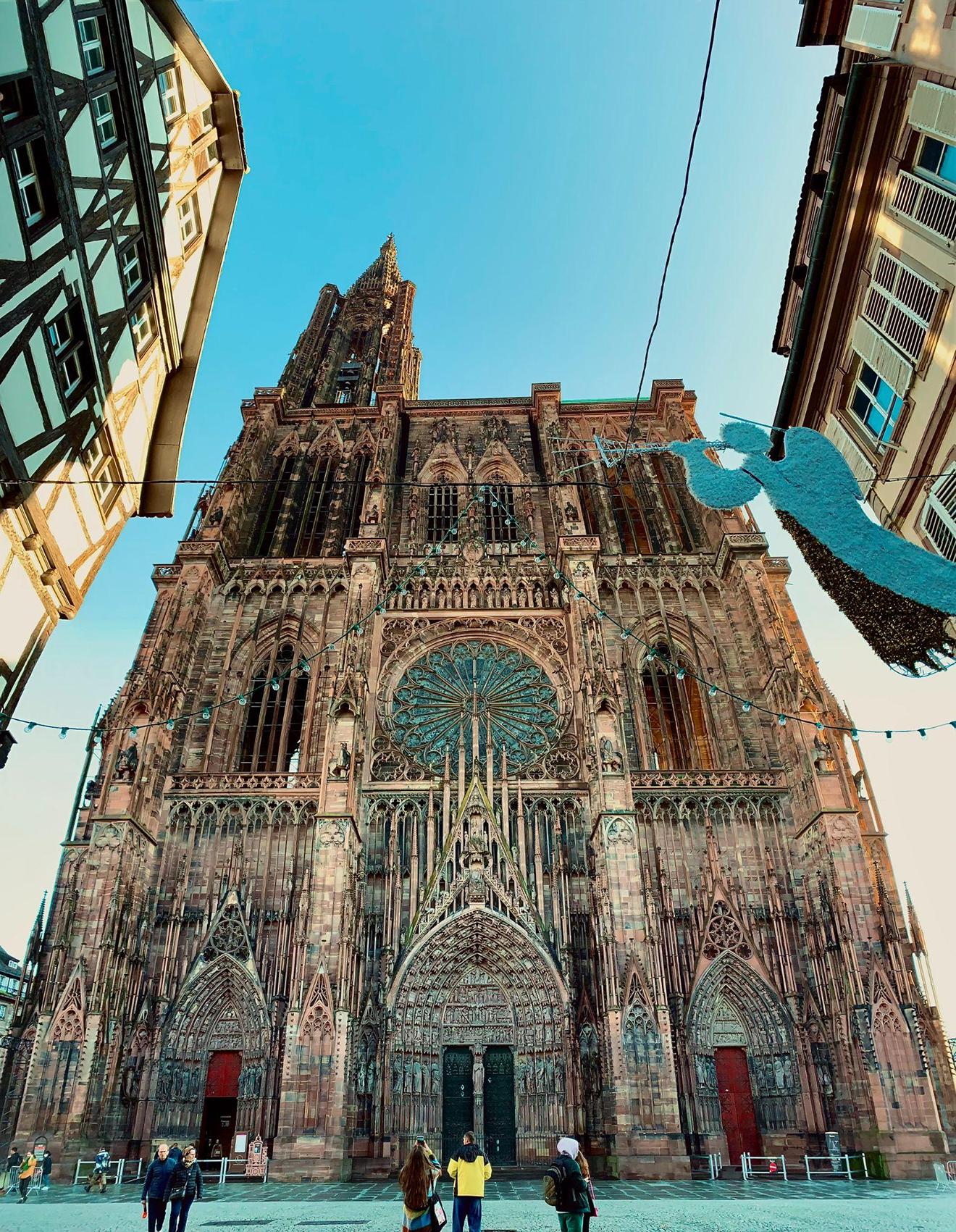 |
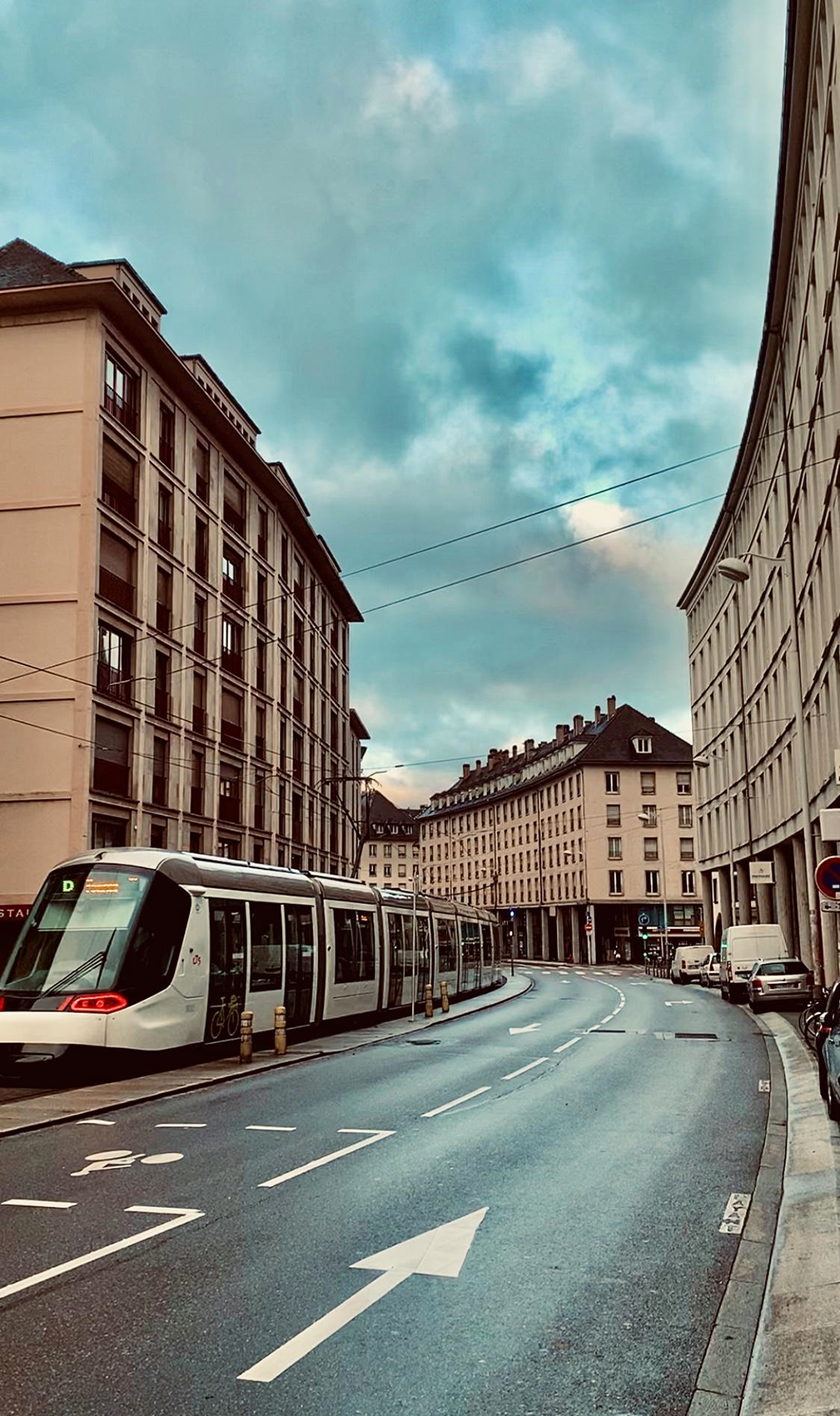 |
After the weekend we had lecture in “basin analysis and modelling”, sedimentary basin fill: stratigraphy. On this Lecture we discussed stratigraphy surfaces. Everyday after lectures we continued our scientific work. On Tuesday we attended deposit system and analysis of geological structures extra lecture. After that we attended “numerical methods in geosciences“ and developed our knowledge about it. We were equipped with all the equipment we needed to do the job. Our tenth day has begun so quite productively, because we learnt a lot about “Thermal use of groundwater”. We learnt a lot of things about water distribution and movement deep in the ground. We also got acquainted with different methods of calculating the movement of water. Besides, we heard a lecture on borehole logging technology, which was quite complex and at the same time interesting. After such a busy day we attended an extra presentation in a special seminar about “Role of subduction plate in orogeny and mountain, topography”, which was so comprehensive. And our day finished with dinner with our dear colleagues.
On Friday we continued digitising the information from the drill core analysis which we had investigated in September this year from the borehole Spartak at Enguri dam. In addition, we started to learn the digital core orientation process with the help of Maya, who works as a student co-worker. Mr. Benny Busch took us and kindly showed us the laboratory of engineering geology, and explained the purpose and use of each tool and machine. We were told about some scientific tests and experiments.
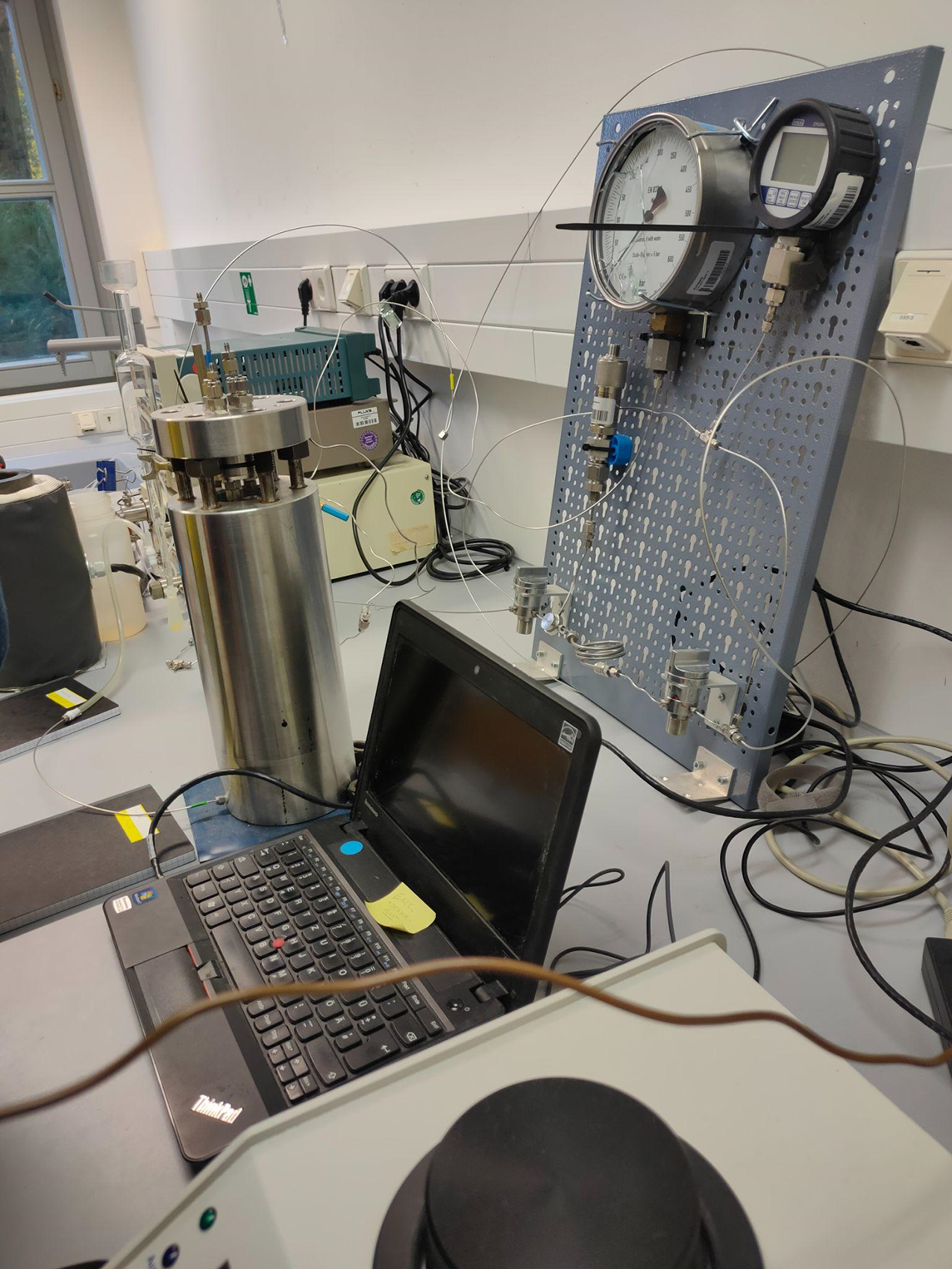 |
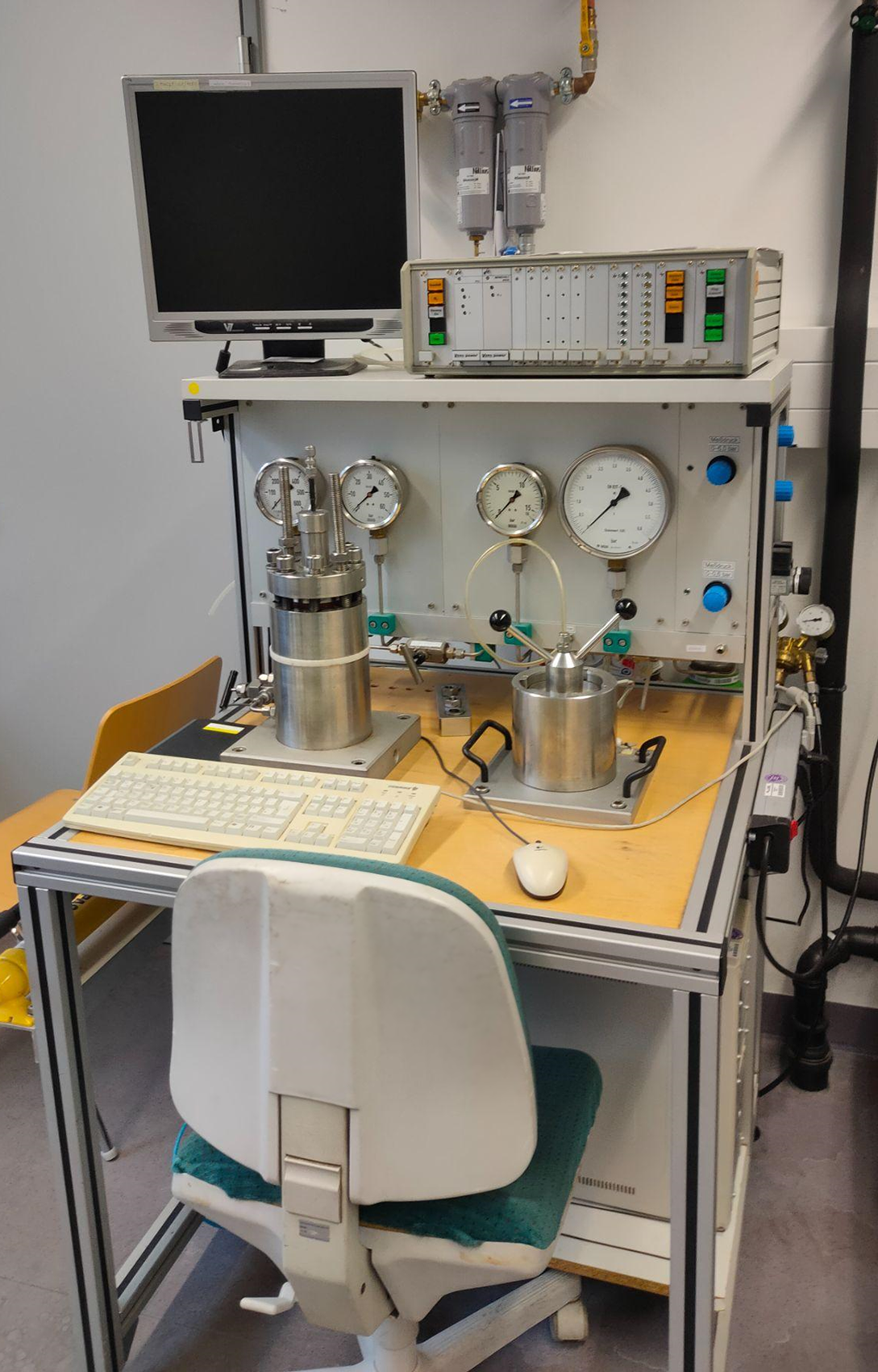 |
Week-End 2
At the second weekend, Lukas Müller took us by car to Heidelberg, Germany. We were excited by the architecture of this city, also we have been on Christmas market, where we got some souvenirs and a lot of memories. We also saw signs on the bridge that recorded the depth of the river Neckar for years. Schloss of Heidelberg left a great impression on us.
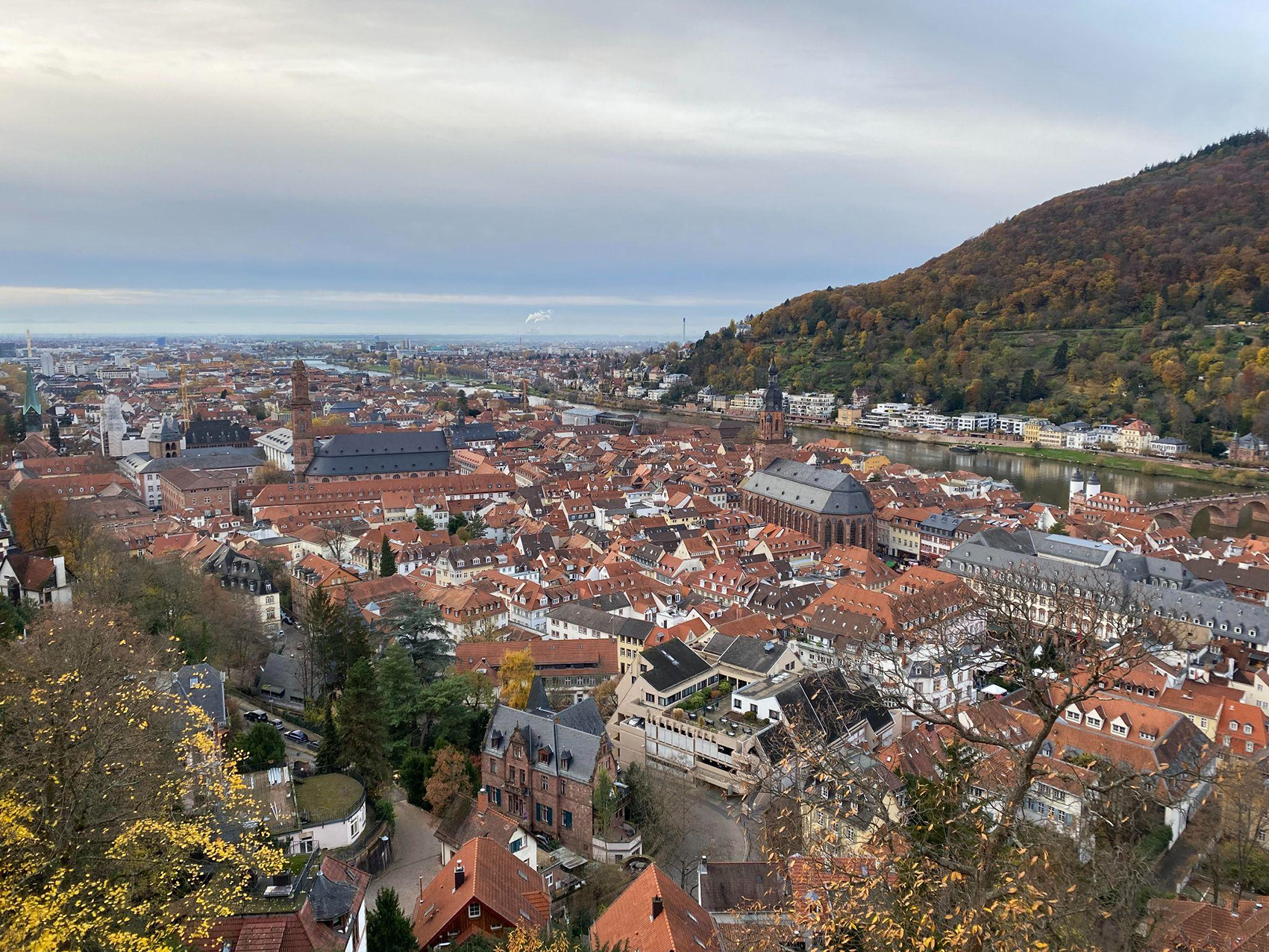 |
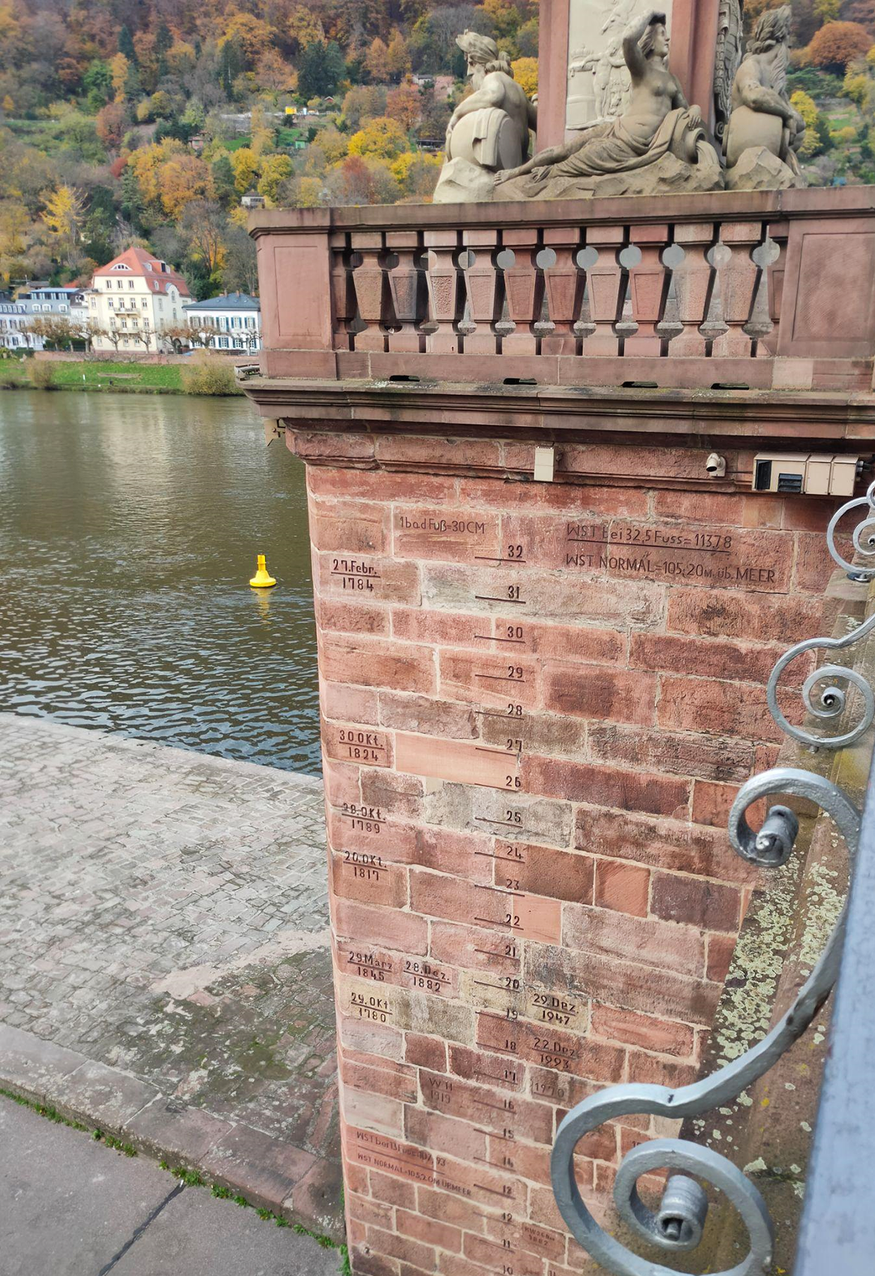 |
On the first day of last week, we finally finished our excel work (typing in lots of number on fractures which we have seen on the cores of Enguri dam, which was so laborious). And in the evening we were kindly invited by our dear colleagues for a special Christmas dinner.
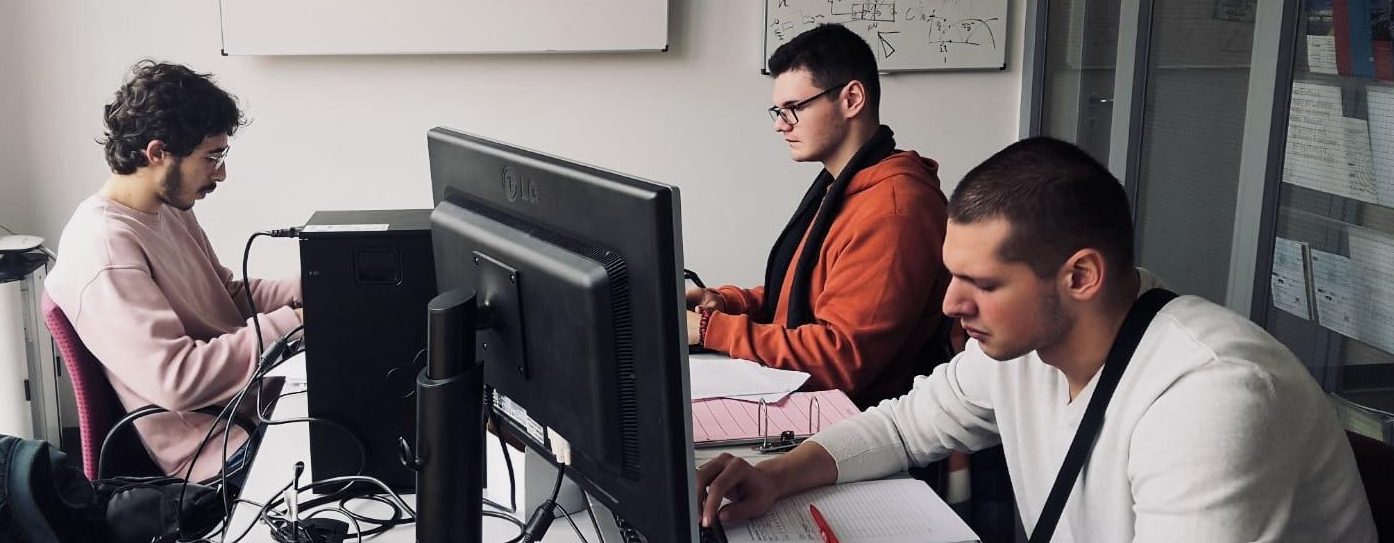
On Tuesday we attended lecture about numerical methods in the geosciences, where we talked about measure tendencies, measure of dispersion and we made some exercises about “Histogram and distribution”. The last few days of the week we attended lectures as usual and tried to deepen our knowledge about working with excel. And finally, on first December we received the certificates from Prof. Dr. Frank Schilling.
The diagram which is given below is based on Spartak borehole data. With our Excel table we now can make plots of core piece lengths with depth or on the dip of fractures depending on the depth of the core piece.
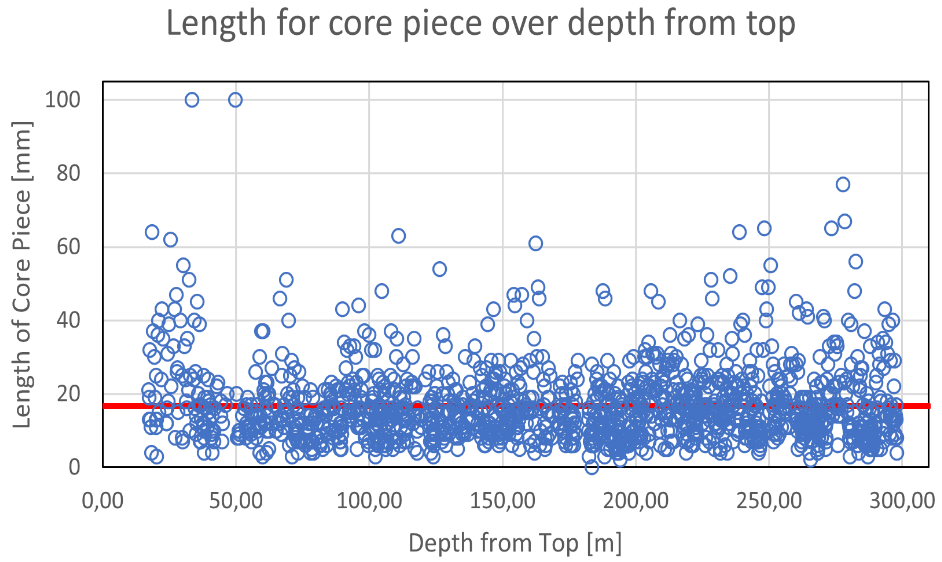
In conclusion, we would like to say that everything was even better than we expected, the studying and working environment was excellent, lecturers and students were very friendly and wholesome, that made our practicum more profitable and exciting. This practicum was the most useful experience in our geological carrier, because it gave us great new friends and colleagues, and the main thing, knowledge which will always be with us.
SDG Scientific stay of students from GTU Tbilisi at the Institute of Structural Geology at KIT
Between October 18 and November 14, Anzor Giorgadze (PhD student at GTU Tbilisi) and Mariam Bekurashvili (master student at GTU Tbilisi) visited the institute of Structural Geology at KIT. Based on their own rock samples from outcrops close to the Enguri Dam, rock plugs and thin sections were prepared and subsequently analyzed for petrophysical properties (e.g., porosity, permeability, wave velocities) and petrographical characteristics (see photos). The data they acquired complement the data collected from the KIT-2 core that was drilled close to the Enguri Dam.
 |
|
SDG Geomechanic Workshop at Enguri September 2022
After arrival on Monday, September 19, the 10 students of TSU and GTU and the accompanying Professors Kalabegishvili (GTU) and Melilkadze (TSU) have been welcome by Dr. Birgit Müller, Dr. Thomas Röckel, Thomas Niederhuber and Sam Rasalingam.
They got a brief explanation to the site of the Enguri High Dam and visited installations of KIT-experts.
On Tuesday morning B. Müller provided a general introduction to Sustainable Development Goals and especially the role of geosciences to achieve the UN sustainable development goals.
The second part of the morning lectures was devoted to an introduction to geomechanics and the theory of tectonic stress.
In the afternoon the group used the possibility of sunny weather to do logging with acoustical televiewer and a gammy ray tools in two boreholes located on the top of Enguri High Dam. These measurements provide insight into the subsurface fracture and stress system. Thereby the students and their professors detected a significant difference in water level between the two wells and thus actively contributed to research at Enguri Dam.
In the evening the group got a guided tour by professor M. Kalabegishvili to the inside of the Enguri Dam, and to the so called power tunnel with the big butterfly valves. During this part of the field trip technical explanations of dam building and operations have been provided.
Wednesday morning provided an introduction to wireline logging and especially to the functionality of the logging tools used the day before.
In the afternoon the student groups have been divided in order get smaller groups for the Core Scanner and the core analysis lectures. Core Scanning was shown by Sam Rasalingam to the students. Students got practical experience using the Core Scan and they also had fun scanning a bottle.
Thursday morning was again devoted to Core Scanning and investigation of cores. Expert Thomas Röckel with his experience from the German Deep Drill Hole KTB (9 km depth) showed the students how to distinguish natural fractures from induced fractures. Furthermore, how the minimum horizontal stress orientation can be detected from induced fractures in cores.
On Thursday afternoon the geodetic team of KIT took the students to the site of the ground-based SAR and explained the technology and also the first results of the measurements.
Friday was devoted to learn about the Software tool WellCad, with which the data of the logging can be analysed. The trainer was Thomas Niederhuber who thanks to ALT company organised licences for the software for the students. This software enables to analyse the well logging data and to pick fractures therein. These fractures lateron can be compared to the fractures picked in the cores. This approach enables to orient the cores. This is important to obtain a better understanding of the open fracture systems and thus fluid flow in the underground.
The field trip provided an introduction to how geosciences can contribute to sustainable development of Georgia. Furthermore, we hope that the team of the KIT helped Georgian students to learn technology tin geosciences.

2022 Geomechanics Course
Motivation and Goal of the Course
Course Structure and Layout
Monday, September 19 2022
| Arrival |
Tuesday, September 20 2022
| Morning |
Introduction: SDGs and the potential role of geosciences in contributing to the SDGsGeneral Introduction to Geomechanics |
Birgit Müller |
| Afternoon |
Stress induced failure features in boreholes which can be identified by logging |
Birgit Müller/ Thomas Röckel |
| Afternoon | How to work with Drill Cores (theory and practice) |
Thomas Röckel |
Wednesday, September 21 2022
| Morning |
Logging Tools |
Birgit Müller |
| Afternoon | Practical Borehole Logging | Birgit Müller, Thomas Niederhuber |
Thursday, September 22 2022
| Morning |
The Core Scan – Introduction |
Thomas Niederhuber,
|
| Afternoon | Scanning Drill Cores – Practical |
Friday, September 23 2022
| Morning |
Identification of Features in Borehole Logs with Well Cad Software |
Thomas Niederhuber, |
| Afternoon | Practical with Well CAD | Thomas Niederhuber, Birgit Müller |
Participants should have their own Computer for the software trainings.
Participants should keep a digital field log, with notes about what they have learned and also with tables of e.g. scanned cores, picked features, photos etc.

